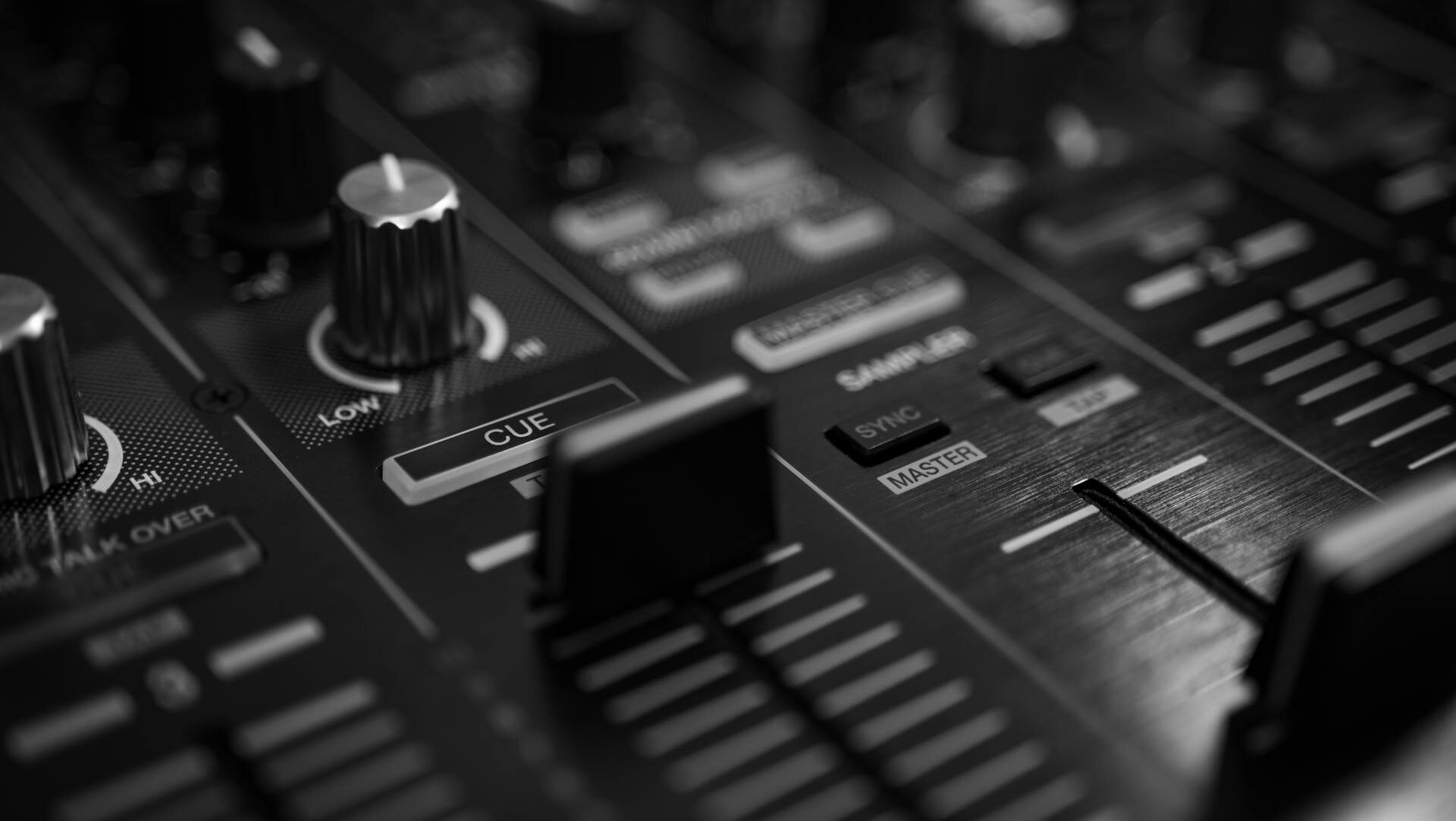“Mixing and mastering is like painting. Once you learn how to use your brushes in order to get image from your mind to paper you have it all” – Unknown
You’ve recorded your vocals. The beat is fire. The song feels good. But hold on a minute, it’s not finished yet. There’s a couple more things to do. This is where mixing and mastering step in. These are the invisible yet essential processes that take a song from a raw demo to a polished, release-ready track. These are the stages that give music its emotional power, clarity and professional finish. Understanding what happens during each one can help you become a more intentional artist or producer. Let’s unpack what really happens during mixing and mastering, and why each stage matters.
The Mixing Stage: Shaping the Soul of the Song
Mixing is the process of combining and refining all the individual tracks in a session to make them sound cohesive, dynamic, and emotionally engaging. This includes vocals, drums, instruments, effects. It’s where the raw energy of a recording is shaped. The process usually begins with organizing the session. This involves labeling each track clearly, grouping similar instruments and cleaning up any background noise if they were recorded. It may not seem glamorous or fun, but this foundation sets the tone for a clean, efficient mix. Think of it as tidying your workspace before you begin a piece of art. You’re clearing distractions and creating room for the creative process.
Next comes volume balancing. At this stage, the engineer adjusts the level of each individual element so that everything sits well together in the mix so nothing is too loud or too quiet. Vocals are typically brought to the front, that’s why it’s called the topline. Then the supporting elements like harmonies, adlibs, drums, percussion, and background instruments are positioned around the vocals. Typically, the kick usually right in the middles with the vocals. This balance is crucial because it determines what the listener hears first and how the emotional weight of the track is delivered.
Once the basic balance is in place, equalization (or EQ) is applied. EQ involves enhancing or reducing specific frequencies to create space for each element in the mix. For example, removing low-end rumble from vocals or softening harsh frequencies in a snare drum. A great mix feels spacious and clear because the elements don’t fight for attention. Each one has its place in the frequency spectrum.
Compression is then used to control the dynamics of the song. The dynamics is the difference between the loudest and softest parts of a signal. A well-compressed vocal feels more consistent and easier to listen to. A vocal performance that isn’t well compressed is too loud in some parts and too quiet in others. Compressed drums hit harder and feel more energetic. However, this effect must be subtle. The goal is to smooth things out without squashing the life out of the performance.
After compression, effects like reverb and delay are introduced. These are used to add depth, mood, and a sense of space to the mix. Reverb can make a vocal feel like it’s in a large room or a cathedral. How much of reverb to use is sometimes determined by the message you’re trying to pass across in a song. Delay can create rhythm or echo, helping certain words or sounds linger emotionally. Delays are sometimes used to fill spaces in a song. These effects are like the lighting and atmosphere in a film, they don’t carry the plot, but they set the tone.
Stereo placement and panning follow, allowing the engineer to spread elements across the left and right speakers. This makes the track feel wider and more immersive. It also gives the listener a more natural and dynamic experience. For instance, you might have backing vocals panned slightly to the left, while a guitar riff fills the right, creating balance and texture. You may have your toms or congas panned to the right and your shakers to the left. Every producer or engineer has his style. You do what you think sounds best to you.
One of the final steps in mixing is automation. This involves adjusting volume, panning, or effects at specific points in the song to create movement and emphasis. For example, the chorus might be slightly louder than the verses, or a vocal delay might kick in only at the end of a powerful phrase. Automation helps tell the story more effectively by guiding the listener’s attention throughout the track.
Once everything is in place, the final mix is rendered usually as a high-resolution stereo WAV file after which it is prepared for the next stage: mastering.
The Mastering Stage: The Final Polish
Mastering is often misunderstood, but it plays a critical role. While mixing focuses on the individual ingredients of the song, mastering focuses on the entire song. It brings out the best in the final mix and ensures that the song is consistent and polished across all platforms be it on headphones, car speakers, or in a club.
The mastering engineer begins by listening critically to the track, often on high-quality reference monitors or headphones, and identifying any remaining issues in tone or balance. They approach the song with fresh ears. This is why some engineers advise that mixing and mastering be done by two different people.
Subtle EQ is used once again. This time, however, it is used to adjust the overall tonal balance of the entire song. If the track sounds a bit too dark or too bright, mastering EQ helps correct that. The goal is to make the song sound full, clear, and emotionally balanced. Compression and limiting are applied to control dynamics and increase perceived loudness. Remember what dynamics is right? However, note that this must be done delicately. Over-compressing a track during mastering can make it sound flat and lifeless. The best masters feel powerful, yet natural. The quiet parts still breathe, and the loud parts hit without distortion.
Stereo imaging might also be adjusted. This involves slightly enhancing the width of the mix, while ensuring that the song still sounds great in mono because phones and small speakers play music in mono. Stereo imaging is not an essential part of mastering though. It is a stylistic issue in most cases.
One of the final steps is limiting, where the track’s overall volume is raised to commercial loudness standards. The limiter ensures that the song doesn’t clip (distort) while bringing it up to a competitive level compared to other tracks on streaming platforms. A great master feels louder and more vibrant, without losing the integrity of the original mix. It doesn’t have to be crazily loud though. “Mr. Morales and the Big Steppers” by Kendrick Lamar is an album that was mastered very low but with a very good mix.
Finally, the song is exported in various formats depending on where it will be released. High-resolution WAV files for streaming, MP3s for casual listening, and sometimes DDP files for CD pressing. This stage may also include embedding metadata, ISRC codes, and ensuring the correct sample rate and bit depth.
Why Both Stages Matter
Mixing and mastering are two separate disciplines, each essential to the process of music creation. Mixing shapes the emotional and sonic identity of the song, while mastering prepares it for the world. One without the other risks leaving your music unfinished. If mixing is the act of sculpting, mastering is the final shine that makes the piece ready for the gallery. Skipping either step is like framing an unfinished painting or releasing a film without color grading. The details may go unnoticed by the average listener, but the impact will be felt as they will sense something is missing.
Final Thoughts
Mixing and mastering are essential for a great release. They ensure that all the time, money, and emotion you put into your track actually translate to your listener. And every artist deserves to have their music heard the way it was meant to be felt. Investing in professional mixing and mastering ensures that your sound not only meets industry standards but also communicates your vision with clarity, emotion, and impact. So whether you’re about to release your debut single or you’re putting the final touches on your next project, don’t underestimate the power of a good mix and master. Your music deserves more than just being heard. It deserves to be felt.
Get in touch with us or just request a quote for mixing and mastering. Let’s make your music sound as good as it feels.


